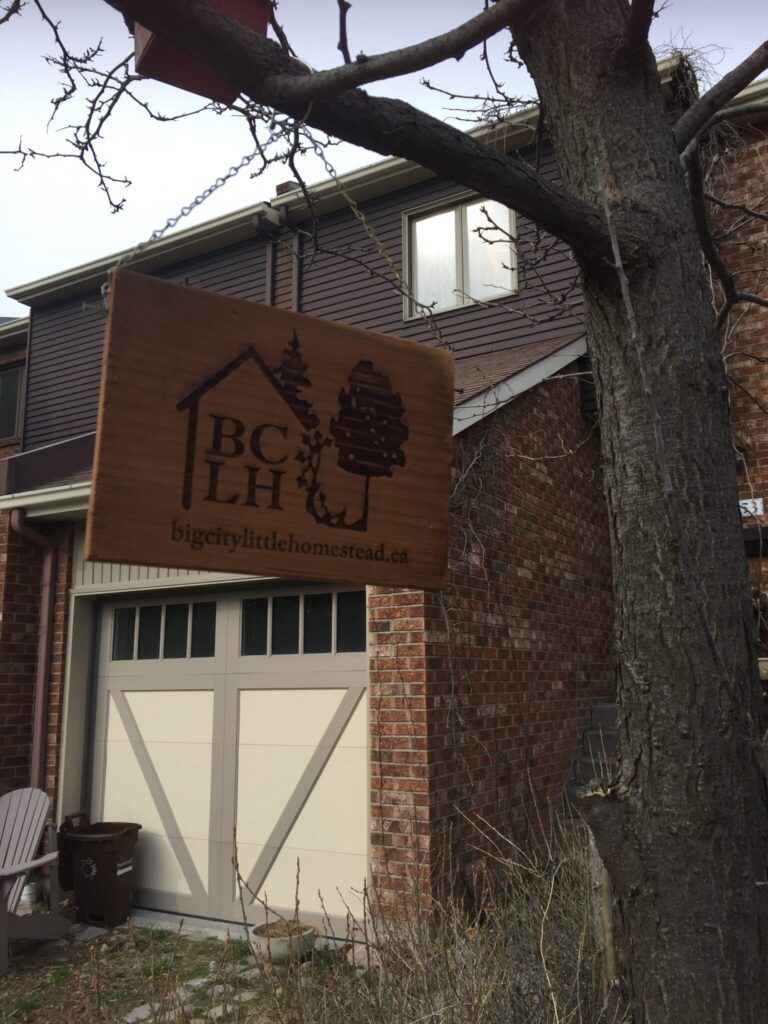Don’t you just love lounging (or curling up) by the fire on a cold winter’s eve? Lord knows, I do — just as much as in summer, because I love camping! So when I bought my home in late 2005, I had a wish list, and fireplace was right up there in the “needs” section.
Indeed, most homes have one, because along with having a full-sized kitchen or a second bathroom, a fireplace or woodstove is one of the most common requirements. I wonder if this is true everywhere, and not just in an area where, if your main source of heat fails, you need a backup.

So this photo, taken directly from the MLS listing I first saw, was what my fireplace first looked like:
As soon as I got the keys, my first order of business was to paint that room something other than the colour of crud (that yellow-y beige, reminiscent of grease trapped in the grill of your stove vent). I chose blue with white wainscotting and trim:

It took a while to realize I didn’t like the terracotta tile surround of the fireplace, and that I could paint it – so I painted it white. What a difference it made! It brightened up that corner of the room (you’ll see a pic later down this post).

But alas, I rarely used the fireplace, because as every homeowner learns, they are an exit to the outdoors through which all your heat escapes. The glass doors on a fireplace limit that loss in a very minimal way; in fact I hung a blanket across the fireplace when it was really cold and didn’t light any fires at all. Fires were basically for the fall and spring. I still have some of the firewood left to me by the previous owner, which I’m saving up for campfires with friends.
Pellet stoves: an ecologically sound replacement
My carbon footprint is probably as close to neutral as it can get without being surrounded by forest and going solar. I’ve planted a lot of trees, so I don’t feel bad at all about burning wood for its ambiance. Still, there’s a better way to do it than how we have…
I wanted to replace my cold and drafty fireplace with an EPA-certified wood burning stove insert (“insert” means putting a stove…into a fireplace!) But then Montreal enacted the 2013 anti-fireplace law (controversial, for good reason) that disallowed solid fuel stoves and masonry heaters. The law is now revised so that fuel type is not important, if the emissions certification protects air quality.
I prefer solid wood as fuel because to have local private forests, we need to value them. The best way to value them on private land, after the joy of owning a forest of course, is to have woodlots. Firewood comes from dropped deadwood and selective logging. Cutting a small percentage of a forest every year (around 3%) is sustainable and generally not considered harmful for an ecosystem (considering every tree on a case by case basis). What happens if we don’t value firewood? We will lose woodlots – small forests – as landowners transform them into something more “profitable.”
With the new law, I decided on a pellet stove (pellets are compressed sawdust from the milling process). I did my research, acquired the permit, and bought the Harmon pellet stove P35i fireplace insert. It heats up to 900 square feet, which is enough to make my TV den / home office nice and toasty. Foyers Lambert did the job in late fall 2014.
This is how I enjoyed my new fireplace in Winter 2015:


I installed the floor tiles in the spring of 2015. Insurance policies require 18 inches of tile or fireproof flooring in front of the hearth, so this is how it looked with the new floor. Unfortunately, the tile installer didn’t notice the ashes drawer under the stove, so it’s rather a tight fit.
The cover photo (at the top of this post!) is how I enjoy the pellet stove now. I buy my pellets at Reno Depot and at Rona on St. Patrick, and a bag lasts me about three to four days of lounging in the TV den/office space for about 3 hours per night (a bag is about 12 hours of burn). At around $5.75 a bag, this is an inexpensive way to be warm, comfortable, and happy (the Danes have one word for all three: hyggelige) on a cold night.
A different call to action…
If you have no intention to (or aren’t in the financial position yet) to upgrade your fireplace, there’s something really awesome you can do for nature. Come spring, inspect and clean your chimney and prepare it for welcoming chimney swifts. They need urban habitat! And they will only occupy the chimney during the late spring and summer, leaving with autumn migration.
Unfortunately, woodstoves use metal pipes to line the chimneys — unless you choose a different egress for the smoke, little that there is (up to 90% less smoke than traditional fires). Swifts can’t cling to and build their nests in metal pipes; they need masonry towers.






















